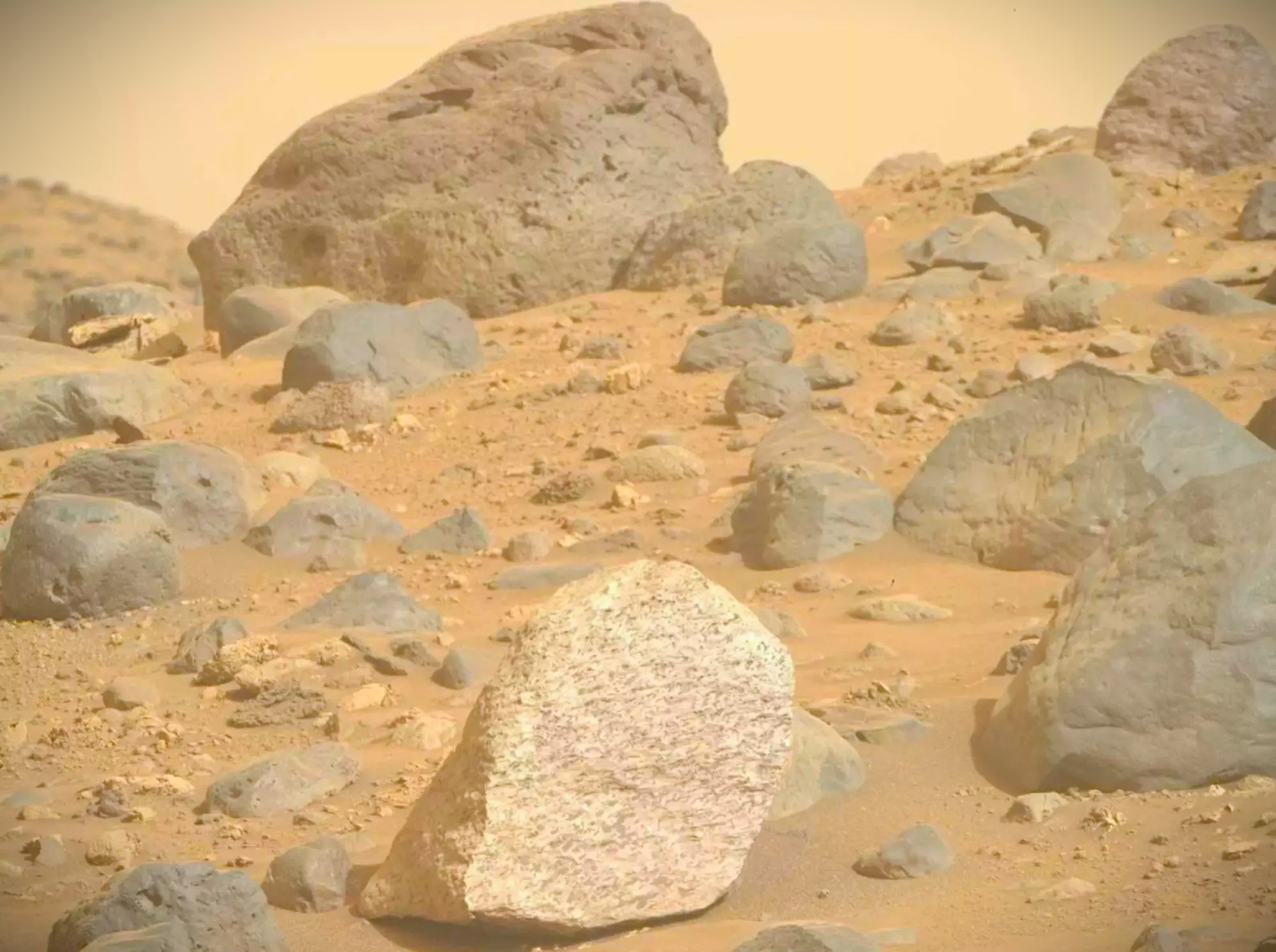NASA’s Perseverance rover decided to avoid boulders encountered on its path and came across a field of rocks that scientists had not previously seen on Mars.

On its fourth trip since landing three years ago, the rover explored the dried-up bed of the Neretva Vallis River, which once flowed into Jezero Crater. After detouring through more favorable terrain, the rover came across a hill covered in boulders that NASA said were “unusual.” The space agency published a photo of the boulder on its X social media page.
Among the scattered dark rocks, one stood out for its white color, which had never been seen before. The rock, about 45 centimeters wide and 35 centimeters high, was nicknamed Atoko Point because of its uniqueness. NASA scientists found evidence that the boulder was composed of the minerals pyroxene and feldspar, indicating its possible subsurface origin.

How Atoko Point came to the surface remains unclear. The composition of the boulder is different from the surrounding rocks, so other scientists on the Perseverance team believe it may have been brought there by running water in the distant past, when there were rivers and lakes on the surface of Mars.
Perseverance mission deputy science lead Katie Stack Morgan believes this finding could be even more significant. She suggests that the boulder may be anorthosite, a rock that has not previously been found on Mars, although scientists have suspected its existence on the planet. Anorthosite is mostly found on Earth and the Moon. The presence of this rock on Mars may indicate that the geology of Mars is similar to Earth.
“Seeing a rock like Atoco Point is one of these hints that, yes, we do have anorthosites on Mars, and this might be a sampling of that lower crust material. If we see it later on in the context of other rocks, it can give us a sense for how the earliest crust of Mars kind of came to be,” says Stack Morgan.
The existence of the white boulder indicates that there may be other similar rocks on the planet. The Perseverance team will therefore continue to look for signs of their origin.
We previously reported that the collected Perseverance samples on Mars contained a veritable treasure trove.
According to mashable.com


